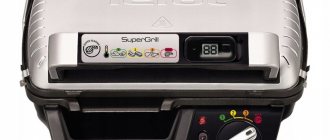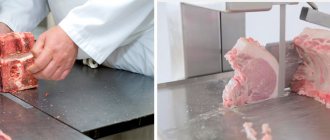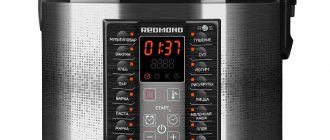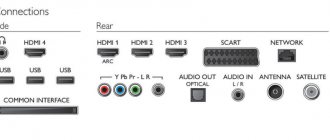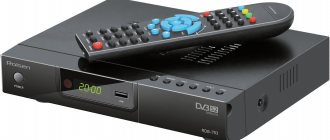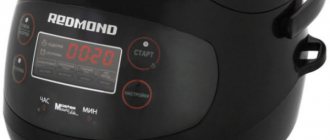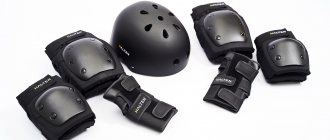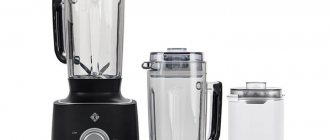What is it for?
Kitchen ventilation rules require that the air change frequency be at least 10 times. This means that the air in the kitchen must be completely renewed at least 10 times per hour. As a rule, this is handled by a wall-mounted ventilation duct, the cooling capacity of which is designed in accordance with sanitary standards. However, it can only work under certain conditions.
In particular, it is necessary to ensure a flow of fresh air, otherwise there will be a slight pressure drop in the room. This pressure difference is enough to stop the natural ventilation system.
In modern apartments, plastic windows and sealed doors are almost universally found, which do not provide a flow of fresh air. Therefore, natural air exchange does not work; forced ventilation is necessary.
The most effective and common solution is a hood with an umbrella over the hob - a simple and reliable solution that traps steam and grease exactly where it comes out and prevents it from spreading throughout the room.
The size of the hood and hob - what is important?
What to do if the hood is narrower than your hob? This will allow air to flow sideways. On the other hand, one that is too wide will consume energy unnecessarily, operating at a higher efficiency than required.
If you choose a wall-mounted or island hood, you should also remember to choose the right height. Therefore, you must adjust the height of the so-called mask according to the height of the space above the heating plate. Luckily, many masks are expandable, making them easy to adapt to your needs.
As for the height of the cornice, most models are within 1 meter. Island and chimney models are most often located in these upper limits.
Before choosing which hood works best, it is worth finding out what performance characteristics it should have.
Specifications
Unlike closed kitchen hoods, which work on the principle of extracting contaminated air - passing it through a filter system - releasing purified masses into the room, devices with a hood into the ventilation system release air to the outside. This technology allows you to quickly remove kitchen odors and does not require regular filter replacement. For larger kitchens, large models with two electric motors are available, suitable for use in food service facilities.
Ventilation hoods consist of a housing, a control panel, a grease filter and an air duct to the ventilation duct.
The body of the models can be made of several materials.
- The most economical option is metal blocks painted with heat and moisture resistant enamels. Such models require careful care and careful use. The advantages of such cases include an attractive appearance, but the disadvantages are the tendency to form scratches under mechanical stress and the opacity of the enamel over time.
- Tempered glass hoods are affordable and have a stylish appearance. The disadvantage of such products is that they require regular and tedious maintenance, which requires some skill and time. The fact is that on the surface of glass, especially those painted in dark colors or tinted, fingerprints, water drops and stains are clearly visible. Therefore, cleaning such a case requires a special glass liquid, patience and skill.
- The most spectacular and expensive are the models made of chromed stainless steel. These devices are distinguished by their light design and elegant shapes. These products do not require tedious maintenance and retain their original appearance throughout their entire service life.
All hoods are supplied with control panels, which can be either push-button or touch-sensitive. Mechanical panels are more understandable and familiar to older people. The buttons on such models are located on the front, which makes it easier to set the desired mode. Touch panels are modern and convenient. They are equipped with temperature and humidity sensors, changes in which automatically change the operating mode of the device. Programming the hood using the touch screen is done only once, after installation. After this, the device works autonomously and does not require constant configuration.
Air ducts installed on canopies are represented by corrugated pipes and plastic air ducts. The former have a round cross-section and are characterized by ease of installation and good flexibility. Installation is carried out using brackets attached to the device. The advantage of corrugation is the ability to give the pipe any bending radius, but the disadvantages include noisy operation and the likelihood of lubricant deposition on the internal folds of the pipe. Plastic air ducts can be either round or square in cross-section; they are mainly produced in white and fit perfectly into the interior. Pros include a completely flat internal surface, which promotes higher air speeds and lower noise levels. Disadvantages are the lack of flexibility and the need to use connecting fittings such as elbows and adapters during installation.
There are two types of filters installed in visors. The external metal filter does not require replacement and up to 95% of grease and dirt is deposited on its surface. Impurities are removed by washing the grate with any detergent that breaks down the lubricant. The second type of filters is represented by replaceable synthetic filters, which, after severe contamination, are thrown away and replaced with new ones.
Rating of the best manufacturers of hoods with ventilation outlet
Budget models
| Model | Characteristics |
| Shindo Metida 500 One of the cheapest hanging hoods, which has an attractive design, compact dimensions and good performance - 430 m3/hour. The presence of metal and carbon filters increases the suction efficiency, the speed is adjustable. Price from 3,500 to 5,000 rub. Pros:
Minuses:
| |
| CATA LF 2060 BK Compact device with simple, intuitive controls. 3 operating modes, maximum productivity 320 m3/hour. It works both with ventilation and recirculation. Average price 5,000 rub. Pros:
Minuses:
| |
| CATA TF 5260 X2 Built-in appliances are ideal for small kitchens, as they do not take up much space and are not conspicuous. Good productivity 520 m3/hour, 3 modes. Average price 5,000 rub. Pros:
Minuses:
|
Middle price segment
| Model | Characteristics |
| Gorenje DK63CLI It features an elegant design, high productivity of 770 m3/hour and quiet operation. Switches to recirculation mode when there is no access to ventilation. High-quality carbon and metal filters do their job perfectly. Halogen lamps consume little energy and are very practical. Average cost 17,000 rub. Pros:
Cons: no indicator of filter contamination. | |
| Elikor RA6634AB Stylish, compact, tilting device. The diameter of the pipe is 150 mm, which provides excellent absorption of unpleasant odors and polluted air with a capacity of up to 650 m3/hour. Works in both exhaust and recirculation modes. Average price 18,000 rub. Pros:
Minuses:
| |
| Electrolux EFF60560OX Perfectly matches the slabs of the same manufacturer. It has a stylish design, operates at 4 speeds, is equipped with a digital display and unique Hood-2-hood technology, which automatically sets the desired power level depending on the intensity of cooking. Maximum productivity 603 m3/hour. Average cost 29,000 rub. Pros:
Cons: none found. |
Premium models
| Model | Characteristics |
| FALMEC PIANO SINGLE SUCTION INOX 130 A unique, innovative device with a width of only 13 cm with an incredibly high productivity of 1600 m3/hour. It is built into the countertop near the hob and has a remote control. Price from 40,000 rub. Pros:
Cons: only suitable for induction and electric cookers. | |
| Bosch DWB098J50 A high-quality unit from a reliable brand. Productivity is 860 m3/hour, there is an intensive suction function with automatic shutdown after 6 minutes, low noise level of 41 dB, touch control - this is not a complete list of the advantages of the model. Average price 55,000 rub. Pros:
Cons: high cost. | |
| NUVOLA WH ISOLA 90 It has a powerful engine with a capacity of 1300 m3/hour, ensuring quiet operation of the device. Attractive appearance of the island equipment made of stainless steel and tempered glass. Modern neon lamps allow you to use equipment when the lights are off. Price from 70,000 rub. Pros:
Minuses:
|
Types and features
The variety of range of hoods offered by manufacturers is sometimes amazing. It's easy to find the best value and quality model on the market.
But for an unprepared buyer, selecting and installing such kitchen appliances will be a difficult and sometimes impossible task. Therefore, before going to the store or installing a hood, you need to understand all the subtleties and nuances.
Sanitary standards and requirements
Any type of hood, recirculating or vented, should be able to move 10-12 times more air through the cooking zone in one hour.
This is a strict hygiene requirement that must be observed. Open fireplaces and heating appliances are widely used in the kitchen. And the humidity in the room is much higher than in other rooms.
As a result, the concentration of carbon dioxide, harmful pollutants and exhaust gases is constantly increasing, which negatively affects human well-being.
If the device is connected to ventilation, then an oxygen supply must be provided from outside. If this factor is not taken into account, a skew effect will occur. As a result, air will be sucked from the duct back into the kitchen.
Another requirement is that the hood must be installed as close to the hob as possible. This is a minimum of 65 cm for an electric stove and 75 cm for a gas stove.
A special grill must be installed on the device, onto which dirt and grease will be applied. This prevents waste from entering the ventilation duct.
Hood with ventilation outlet
The classic and most familiar to most people are hoods that draw air through a vent. A constant flow of fresh air makes you feel better, improves your mood and makes your stay in the kitchen more comfortable.
As a rule, exhaust devices provide forced ventilation, for which a fan is used. This approach allows you to quickly remove excess moisture from the room, which can harm the furniture set, unpleasant odors, various fumes, soot, excess carbon dioxide, etc.
In order not to pollute the atmosphere around the house, hoods use a special filter that collects most of the pollutants.
The hood attracts stale air and removes it from the room, for which the ventilation shaft of a house or apartment is used.
The only downside to built-in vent hoods is that they are difficult to install. After all, the device must be connected to the duct. If your home doesn't have ductwork, you'll need to drill a hole in the wall.
Installation features taking into account the type of fastening
Watch the video: how to install it in the kitchen yourself
Installing a hood with your own hands. YASAMMOGU-TV
Suspended flat hoods are not connected to the air duct. They are supplied with elements for fastening to the bottom of the cabinet. The attachment points are marked with a pencil. Drill recesses. The filters are removed to expose the mounting holes. The fasteners are assembled and attached. The hood is checked by level. All that remains is to connect to the power supply through an outlet. Wall-mounted devices are mounted on metal corners. The body rests on a frame, which is attached to the wall with screws. Use self-tapping screws - studs, if there is a gas pipe running along the kitchen wall. The body is fixed to the stud with a nut at the required distance. If necessary, the distance is increased with wooden blocks.
Built-in hoods are located in a wall cabinet above the stove or on a shelf in your kitchen. For fitting, the body is placed in a cabinet. They measure the distances, check the level, in the center. If the fitting was successful, mark the holes. The cabinet is removed, passages are drilled in it to lead to ventilation.
Island devices for creating traction are fixed to the ceiling. If the air duct does not reach the ventilation, you can install a circulation exhaust device yourself. With any type of equipment, it is important to create a direct path to the shaft without kinks.
And if the installation of equipment is carried out with your own hands, then at this moment you need to pay special attention.
How to connect to a ventilation duct with your own hands
You will need a corrugation (box), a grille, a valve, and tools. With a direct connection, the corrugated air duct is combined with the ventilation duct. For a clear connection, a round grille is installed. A corrugated pipe can disrupt the appearance of the kitchen. It is masked in a plasterboard box or box.
Read the article about corrugated pipes and their use in kitchen exhaust systems.
Watch the video: how to install an exhaust hood in the kitchen yourself
HOOD and VENTILATION - 1. Best combination.
PVC structures are assembled from pipes; if there are turns and bends, then it is necessary to connect the corresponding corners, then the resulting structure is brought to the ventilation hole. It is advisable to prepare a diagram in advance. There should be a minimum of turns.
The kit includes corners for turns, adapters, wall panels, and fasteners. It is necessary to correctly calculate the size of the plastic structure. Joints and connections are self-treated with sealant.
Steps for connecting an exhaust device with your own hands
Installing equipment built into a cabinet is more difficult. To do the job correctly, we follow the following sequence.
- We manufacture or purchase an anti-return valve (firecracker).
- We place the housing in a cabinet above an electric or gas stove in the kitchen. We fix it, cover the cracks with sealant or special foam. We glue the body to the cabinet to neutralize resonance. We install the firecracker. Mark the holes on the cabinet.
- We remove the closet. Using an electric jigsaw, we cut out the excess in the bottom stack and, if necessary, in the internal shelves according to the markings.
- We connect the air duct. We cut off the corrugation, leaving a reserve. We cut the corners and bend them outward. We fill the joints with silicone sealant.
- Above the kitchen cabinet we attach a box to connect the corrugation to the ventilation shaft. We fill the joints with silicone and foam large cracks.
- We fasten the hood using self-tapping screws or dowels. We put on a kitchen cabinet.
- We attach the corrugation to the hood with a special clamp. We treat the connections with sealant.
Grounding and grounding, installation of sockets
Entrust this work to an electrician! During installation, the hood is connected through three wires: phase, ground and neutral. Grounding protects against voltage surges. This is a yellow wire with a green stripe.
If there are Euro sockets, we use a grounding loop. The wire is connected to terminals with stripes or the Ground (GND) mark. If there is no grounding connector, it can be made from a wire connected to a part of the metal housing.
Euro sockets are not available in all apartments. To ground, the wire is connected to a dead neutral in a pipe or bus under the electrical panel. The neutral wires are located on the pin. A multi-channel wire (with a cross-section of 2.5 mm2 or more) is pulled from it. The hood is connected to a 6.3A circuit breaker.
Dangerous! It is impossible to disconnect the wires connected to grounding. The new wire is laid over the old ones and tightened with a nut. On a smooth surface, you can secure the contacts with a clamp. If you are not an expert in this matter, contact a professional!
We select the socket taking into account the fact that most exhaust appliances have three-core wires. We install an outlet in the kitchen above the cabinets at a height of 2 meters. It should not be placed near the sink, stove or cluttered with appliances. In an open place, the socket is hidden in a special box.
Installation of the supply valve
When installing a supply valve, the general house ventilation should not be blocked. Therefore, a grille with a valve and a place to secure the air duct is installed. Instead of a grille, a check valve with an anti-return mechanism is suitable.
When the valve is closed, the kitchen area is ventilated as usual through an opening or window. When the fan starts, the clapper closes it. The air is locked in the channel, the reverse draft does not occur. The movement of the valve is controlled by a spring. You buy a firecracker, sometimes you make it yourself from aluminum, galvanized steel or tin.
When preparing the holes for the hood, we cut a square in the top wall of the cabinet ourselves and add a margin of 3-5 mm for the firecracker. We install the check valve in the ventilation hole and treat the edges with sealant.
Legality of connecting a hood in the kitchen with general house ventilation
The builders of old high-rise buildings did not take into account that future residents would install exhaust equipment many years later. Therefore, they did not provide individual kitchen ventilation ducts. Connecting exhaust devices in such houses changes the pressure in the system. People cook or smoke in the apartment, and the aromas attract the neighbors. What does the law say about this?
SNiP 01/41/2003 allows you to combine different ventilation methods. Mixed systems can coexist with natural and mechanical ones. It is allowed to connect to the individual exhaust duct of the apartment.
If the entire system is functioning normally, then foreign odors should not reach the neighbors. Problems arise due to installation errors. The legality of the connection is beyond doubt, but before making it, you must call a ventilation specialist.
Exhaust device for kitchen without connection to ventilation
Flat or suspended hoods with a filter serve in two modes. The air is passed through a filter (recirculation) or taken outside. Filters are changed every six months. Kitchen hoods without a ventilation connection are not difficult to install. It is necessary to study the fasteners, mark the places of fastenings on the walls, taking into account the distance. Drill, install dowels, screw on awnings. Equipment is attached to them.
Hoods with filters have low performance. To increase power, you can install an additional fan into the air duct yourself. Install adapters and power cord. Over time, the built-in fan can be replaced with an external one with performance up to 2000 m3/h.
Air supply devices are installed in the kitchen: window fans, ventilators. In old buildings, sealed windows and doors disrupt natural air exchange. The craving disappears, mold and moisture appear. The ventilator is mounted on a window or wall. It allows a limited volume of air to pass through and creates a healthy indoor microclimate.
Watch the video
Functional
Hood Modes:
- Drainage. Kitchen hood with air outlet into the ventilation system. It is either connected to the ventilation shaft or vented outside through a special hole in the wall. Hot, humid air and unwanted odors are removed from the apartment, ensuring 100% efficiency.
- Filtration. These are hoods without connection to ventilation. Air filled with cooking vapors and aromas enters the filter and is sent back after cleaning. The filters are located inside the housing and must be replaced or washed periodically.
Filtration or recirculation mode makes installation much easier. You don't have to decide how to vent the hood. The efficiency of the device is noticeably reduced.
The hood is filtered using synthetic, carbon, paper, non-woven, acrylic or metal filters.
A dense carbon filter reduces engine power.
Below are the rules for installing a ductless hood and how to connect the hood to the ventilation system.
Advantages of exhaust devices with ventilation outlets
Kitchen hood ventilation has the following advantages:
- High degree of room purification.
- Easy to maintain the device.
- Aesthetics and stylish design.
- Practicality.
Performance
This indicator mainly affects the quality of indoor air treatment. Capacity determines the volume of air passing through in 1 hour.
Sanitary standards require 12 air changes in the kitchen.
We use the formula:
P x H x 12 x 1.3
where P is the kitchen area, 1.3 is the compensation coefficient, 12 is the air exchange coefficient, V is the height of the room.
Choose models that exceed the design capacity by 10 - 15%.
Simfer 8562 SM - affordable model with a 5-year warranty
A hood with a capacity of 500 m³/hour can quickly clean the air in a room of up to 10 square meters. m. The maximum noise level during operation is 55 dB. The sound will be heard in the kitchen, but will not reach other rooms, so you can cook even at night.
Like other models, Simfer 8562 SM is made of stainless steel, but differs in color. The outer part is painted silver.
A powerful hood can remove extraneous odors or remove air completely, replacing it with fresh air from the air vent. To prevent foreign odors from entering the apartment from the ventilation shaft, the manufacturer equipped the device with an anti-return valve.
The kit includes a grease filter, and there is also a special mesh that prevents grease and dirt from entering the working part. If you need the Simfer 8562 SM to operate in circulation mode, you should buy a carbon filter.
Pros:
- good performance;
- mesh for protection against dirt;
- two operating modes;
- The set includes two built-in halogen lamps with soft light that will not hurt your eyes in the evenings;
- effective filters;
- anti-return valve;
- 1825 days warranty;
- Replacement filters are easy to find.
Minuses:
- noise is possible within the kitchen;
- mechanical buttons, difficult to clean.
Advantages and disadvantages
High consumer demand for ventilated models is due to a number of undeniable advantages of these devices.
- Thanks to the removal of contaminated air masses to the outside, the degree of cleaning of the room is almost 100%. This is almost 30% more efficient than closed-filter ventilation units.
- The absence of a filter system in the hood eliminates the need for regular filter replacement. This makes the device much easier to maintain and saves money.
- The aesthetic appearance and elegant shape of the device allow it to be installed in a kitchen of any style, without fear of cluttering the space and spoiling the interior.
- The high efficiency of hoods is due to the presence of a coarse filter with minimal resistance. This allows steam and smoke to leave the room without entering the pre-filter area.
The disadvantages of the devices are the complexity of installation, which is associated with the need to equip air ducts, as well as the presence of noise during operation of the device. In addition, for proper and efficient operation of the device, sufficiently good draft is required, in the absence of which it becomes necessary to install powerful fans. In addition, in houses that are not equipped with ventilation ducts, you will have to forge the wall yourself and create a hole for the ventilation duct.
Housing material
The latter is made from different materials. It could be:
Metal
Such products have the lowest cost. The top is covered with moisture-resistant enamel. The advantage is aesthetics. Disadvantages - the tendency of the enamel to become cloudy over time, low resistance to mechanical influences.
Strained glass
Advantages: financial accessibility and visual attractiveness. The negative aspects are the laboriousness of care and the need to carry it out systematically.
Stainless steel
The most expensive models. Pros: light weight, no need for painstaking care, reliability, elegance and style.
Where should it be located
When you buy a hood, it always comes with instructions that indicate where to install the device and at what distance from the hob. The hood can be built into or under a cabinet, provided it is the same size as the hob and hangs level above it. Also, before you buy a hood, consult with specialists about its characteristics. For example, a small appliance will not fit in a large kitchen, and a small kitchen does not need a very powerful appliance.
Filters for hoods
Filters are used in closed-circuit hoods. In such cases, it is drawn in and then passed through a filter system. Most often these are simple filters that remove grease and dust. They are made of aluminum or stainless steel. These filters should be washed regularly.
In addition to classic filters, carbon filters are also often found in hoods. Removes odors and smoke from the air. Finally, the purified air returns to the kitchen. Carbon filters cannot be washed. They should be replaced with new ones.
Distance from plate
Before you start calculating the distance to the hood, you should choose the type of air intake. They can be parallel to the hob (horizontal) or inclined (sloping). What are the differences in their work? Horizontally at an angle of 90 degrees, and all the steam, smell, small splashes of lubricant are absorbed much easier. The vertical looks attractive, but sometimes more power needs to be included to improve performance. However, using this type of equipment is much more comfortable - you can avoid hitting your head on your body.
After selecting the device, a calculation is made at what height to hang the hood above the gas stove. A common mistake after purchasing a kitchen appliance is missing or skipping the minimum distance between the hood and the gas stove, which will undoubtedly entail unnecessary expenses.
Device manufacturers include wiring diagrams in their products. There you will find recommendations for measurements and rough calculations. To understand at what distance from the gas stove the hood of your model should hang, you need to know the type of inclination of the air intake.
Horizontal and inclined devices are installed at different heights. The first is parallel to the gas burners and therefore should be located above the inclined one. The latter can be set slightly lower.
Oblique
These are wall-mounted devices, usually compact and with the most interesting design. The height of the inclined hood from the hob depends on several parameters - the size of the room and the type of hob. The height of a person does not play a big role here, since the risk of hitting the head on the body is minimal. Therefore, these devices are best suited for tall people.
The height at which the inclined hood should be suspended above the gas stove is determined, first of all, by the design of the device and the manufacturer's instructions. The calculation is based on the distance between the bottom edge of the air intake and the burners.
Make sure it does not exceed 55 cm. Although the risk of fire is minimal, it does exist. In addition, open flames and high temperatures may melt or render some parts of the hood unusable. But even higher than 65 cm is not recommended. In this case, you may need more suction power. For electric hobs, the norm is 35-45 cm. The risk is lower here, so the requirements are also lower.
Horizontal devices
These are low, often flat appliances that will work well in any room. In the case of the classic horizontal type, the distance between the hood and the hob is calculated depending on the type of hob. The standards are different here. For gas hobs, the air intake is located above the bottom of the hob, about 65-85 cm. And if you have an electric version, the hood can be installed flush with the upper kitchen cabinets. The same applies to built-in devices. In this case, the height of the hood above the hob may be slightly lower - from 60 to 80 cm.
The best manufacturers of kitchen hoods
There are many different companies involved in the production of kitchen equipment. Some belong to large brands that distribute equipment throughout the world. Others are known only within our country. Both of them have quite decent models. Therefore, the list of the best manufacturers of hoods includes:
- The Russian company ELIKOR is engaged in the creation of hoods and air purifiers.
- Kronasteel is a German brand founded in 2000 that exclusively develops kitchen hoods;
- Bosch is an international corporation with its main branch in Germany, which appeared back in 1886;
- Simfer is a Turkish manufacturer of high-quality kitchen appliances;
- MAUNFELD brand supplies most of the hoods found on the Russian market;
- LEX brand designs built-in kitchen appliances, including high-quality hoods;
- GEFEST from Belarus produces household appliances for the kitchen with high consumer properties.
back to menu ↑
Types of hoods for installation
Kitchen ventilation units are divided according to their installation method:
- Flat;
- recessed;
- islets;
- dome;
- desktop computer
- T-shaped.
Flat
Suspended (flat) appliances are installed directly above the hob. They contain fans for sucking in air and filters for cleaning it. They are relatively easy to hang: no threads or wiring required. The distance between a flat hood and a gas or electric stove is standardized. The height of the hood above a gas stove varies between 75-85 cm (65-75 cm for an electric stove).
Some models are equipped with a duct connection to exhaust air to the outside.
Built-in
This type of hood should be installed in a folding cabinet located above the stove. Thanks to its design, the device becomes invisible in the interior. The appliance must be selected according to the width of the hob and the cabinet in which it will be cut. The distance from the hob to the hood is calculated using the same standard data. However, it is worth considering the height of the wall cabinets (if you want to integrate the structure into finished furniture). When ordering a new kitchen, cabinet manufacturers make their own calculations based on the standards and width of the hob.
Built-in appliances also include appliances that are built into the kitchen countertop, behind the cooktop. They are also called tabletop instruments. The distance between the hob and the appliance is reduced to a minimum. The work surface for this combination of appliances should be approximately 900 mm wide.
Island
Island hoods are installed when the stove is in the middle of the room. The device is attached to the ceiling, directly above the electric or gas stove. The height of the hood above the stove should be between a minimum and a maximum of 75 and 85 cm in relation to the gas stove. For electricians, these figures are 10 cm less.
The installation height should be calculated in such a way that the housekeeper’s head does not reach the body of the appliance when it is next to the stove.
Dome
Dome vents are installed above the stove after kitchen cabinets are installed. The advantage of this type is that they can be decorated to suit different interior styles. Height is standard.
Oblique
Inclined type ventilation devices are installed on the wall. The distance between the stove and the hood is measured from the bottom edge of the stove. The minimum distance from the stove should be 35 cm, and the maximum (for effective operation) 45 cm.
T-shaped
T-type ventilation units fit perfectly into Hi-tech style interiors. They can be made from various materials with chrome parts, glass and stainless steel. The distance from the stove to the hood is calculated in accordance with the instructions of the unit, but in most cases it corresponds to standard requirements.
Which air duct is suitable for a built-in hood?
In most cases, built-in appliances are installed in order to save space. The choice of built-in systems varies from 45 to 90 cm, which allows you to choose a hood to suit any kitchen parameters.
The size of the hood can be determined as follows: the width of the hood must be no less than the width of the stove or hob. The most common today are horizontal systems.
As for vertical systems, they are less common and their installation is expensive. The best option for installation is a corrugated or rectangular plastic air duct.
Installation stages
The entire installation and connection process can be divided into several stages:
- First you need to install the hood in the right place. This involves physical attachment to a wall or ceiling.
- At the second stage, you need to connect the power. If there is an outlet nearby, there should be no problems. Otherwise, you will have to pull the cord from the nearest source and the extension cord can be used as a temporary measure.
- The last step is only relevant for models with air ducts to the ventilation system. At this stage, the air duct is connected and directed into the ventilation duct.
If there is an outlet nearby, you will not have problems connecting it. The rest of the steps aren't too complicated either, but let's look at them in more detail.
Which hood to choose? Extractor or absorber?
Another question that will arise when deciding what to buy as a hood is related to its type. In stores you will find two types of hoods - extractor and absorber.
- Extractor - operates in an open circuit. This is a hood that is connected to a ventilation duct through which air exits the building. No filters are needed for proper operation.
- An absorber is a somewhat more complex device. The air operates in a closed circuit. It is drawn in and then passed through a filter system. Most often these are classic filters that remove grease from them, but in many cases they are also carbon filters that clean them of odors and smoke. A hood with a carbon filter is often not much more expensive than a model without such a filter.
Attaching a wall or dome model to a wall
Despite the fact that both models differ from each other in appearance, they are installed on the wall. There are four holes on the back of the case - two on the left and two on the right. Many manufacturers provide a mounting template with their products that indicates fastener positions. Simply lean the template against the wall and move the markings. If there is no template, measure the distance between the holes and transfer it to the wall. If you have an assistant, you can ask him to hold it at the desired height and make the markings yourself.
The next step is simple: use a drill to make holes of the appropriate size, insert plastic plugs into the studs, and then hang the hood on the stud nails. Of course, we check the level of installed equipment.
This method is good if the wall is smooth and nothing is in the way. Often there is a gas pipe running next to the stove, which prevents the hood from being installed next to the wall. In this case, wooden blocks can be nailed to the wall, and a hood can be attached to the blocks. This is a simple option, but not a very good one - the strips become dirty and difficult to clean.
The second option for installing the extractor behind the pipes is to use studs (another name is hydraulic bolts). They have a thread for screwing into the wall, a smooth part that allows you to take the hood away from the wall, and a smaller thread with two nuts that will secure the housing. There are these studs in different sizes, choose what you need, but all nuts are made to fit a little or octagonal wrench.
This option for installing a hood is universal, easy to manufacture and reliable. It is also easier to maintain - the metal is usually stainless and is not difficult to clean from deposits.
Additional functions in hoods:
If you still can't decide which hood is best for your kitchen, check out what additional features this appliance may have.
- Intensive ventilation - sometimes the atmosphere in the kitchen requires really quick intervention. Some hood models are equipped with an intensive ventilation function. The engine will run briefly at full speed. Then it gradually slows down.
- The sleep timer is a very practical feature. After cooking, the hood is designed to clean the air in the kitchen from water vapor and various odors. But you're not going to stand next to it to turn it off. It can turn off after a certain period of time if it has a sleep timer function.
- The odor sensor is a feature typical of modern hoods. The air in the kitchen is constantly monitored by a special sensor. When it detects a strong odor, steam or other cooking smoke, it automatically turns on the hood at the correct speed. If you are wondering which hood to buy for the kitchen and living room, it’s worth having this option.
Installing a built-in hood in a cabinet
The built-in hood is almost completely hidden in the cabinet designed for it. It is installed in the same way as described above - with screws, but screwed into the walls. Only earlier on the above shelves it is necessary to make holes for the ventilation duct. This is done after purchasing the hood, since the location of the air outlet depends on the company and model.
If the cabinet is hanging, it is better to remove it. After removing the cabinet, reinstall the hood, mark the air outlet on the bottom shelf and cut it out. To do this, it is easier to use an electric jigsaw and a saw with fine teeth. There are almost no splinters left from the laminate saw. If necessary, you can seal the cutting area with a plastic C-shaped furniture profile. They are tough and flexible. Flexibility in use is easy - bends at any angle, rigidity in installation will have to heat the construction dryer. These profiles “sit” on glue, usually with “liquid nails”. After installation, remove any remaining adhesive (with a damp, clean cloth) and attach masking tape to the shelf. Cut off the excess profile with a fine-toothed saw, then clean the cut with fine sandpaper.
Make holes on the other shelves in the same way. They may be rectangular rather than round, depending on the channel cross-section chosen.
Then all the shelves are installed in place, and the cabinet is folded back and secured. The built-in hood is attached to it with screws through holes in the cabinet. Then we start connecting the wiring.
Accessories for hoods
- Additional pipes included make it easy to install the hood and adapt it to the architecture of our kitchen. Usually these are several pipes of different lengths and diameters.
- LCD display - in basic models of hoods it is practically not needed. However, in more complex devices it greatly simplifies communication with the user. It displays, among other things, the current program, information about the need to clean the filter or the current time.
- Radio – Some hoods have a radio option. This will make time spent in the kitchen more enjoyable.
Errors
The most common mistake is blind connection of air ducts for natural ventilation.
Obviously, someone leaves the grille for natural air movement, but still manages to block it with the duct itself.
Connection of a duct diameter that is too small via an adapter to an efficient hood with a large outlet flange.
Recommended dimensions for round air ducts are d=125 mm. For rectangular air ducts – 204*60mm.
Exit the air duct to the outside through a self-made hole in the wall.
In most cases this is prohibited by the rules. Individual provisions will be presented later in the text.
Of course, you can lay a separate channel through the facade to the roof. But is it worth it? Although this solution is widely used in restaurants and cafes located on the ground floors of multi-storey buildings.
By the way, the ban on venting air outside through a wall does not apply to private houses, but only to high-rise buildings.
Complex route geometry with many transitions and turns.
Firstly, it will affect the noise. Although, of course, the corners themselves are not the greatest evil. And sometimes you can't do without them.
Turns that follow one another without acceleration sections are dangerous.
Connecting a backup exhaust duct (e.g. 1000 m3/h) to a standard ventilation duct that can handle approximately 300 m3/h.
Remember that a capacity of 200-300 m3/h is usually sufficient to remove all odors with minimal stress on the ventilation of the house.
6 Mounting the hood at the wrong height.
The installation height directly depends on whether you have a gas or induction hob.
Installing a plastic vent without a good seal or joining the parts with glue.
Believe me, sometimes you have to dismantle the structure.
Top, not bottom, grille grooves in the same frame as the ductwork.
Why this is an error, and when it is still possible, is discussed below.
There is no separate outlet for the hood at the top of the wall.
Thus, it is connected in any way convenient for you, through carrier and extension cords. Don't forget that this is not, after all, a portable device like a fan, heater, or portable air conditioner.
This means that the wiring for it must be fixed and intelligent.
Incorrect installation of the check valve.
It must be cut and installed at the correct angle and slope. Otherwise it will not work properly.
In general, the installation of a hood can be divided into two main stages. The first is connecting to electricity. The second is wiring and everything connected with it.
Incorrect connection of the exhaust duct to the ventilation
The main task during installation is to correctly connect the air duct without disturbing the natural ventilation of the house.
Some masters even advise taking it all outside, through the nearest wall. However, according to the rules of SNiP (Construction Law), this is not allowed.
It clearly states that such a hole cannot be located closer than 8 m from the adjacent window. Since this window is considered as a device for air flow from outside.
Code of Practice SP54 and SP60 can be found here.
Drill a big hole in the wall, spend a lot of nerves and money, and your neighbor will complain to you, and you will be obliged to fix everything.
How do most consumers get in touch? You take a regular waveform, lay it over the vent, stretch it, and attach it to a flange that is bolted to the vent.
Like this. Simple, cheap and wrong. What are the disadvantages of this method? Firstly, the noise.
When air passes through such undulations, it makes very unpleasant sounds.
But the point is that when the device is turned off and not working, natural ventilation is forced to pull air out of the apartment through the hood. Not only can the air duct become clogged, but in the summer there is sometimes no draft at all (due to the same temperature inside and outside the house).
Additionally, you place the greased grate, motor, turbine, etc. by air. In addition, the air intake will not be at the ceiling level, but at the level of the middle of the kitchen.
Although all odors from waste products must be removed from the highest possible level.
It is absolutely clear that in this case there will be no immersion. In other words, with your hands you are depriving yourself of natural ventilation.
This can lead to mold and increased humidity. During the off-season, the door will swell and not close properly.
Add to this the lack of oxygen, and you will constantly feel sick. Some people get confused and think that a spell has been cast on them or there is bad energy in the apartment, but in fact this is the problem - improper ventilation!
Initially, during the Soviet era, when designing our high-rise buildings, engineers expected that air would flow into the apartment, partly due to gaps in wooden windows.
However, by installing plastic windows and sealed doors, we blocked this channel of fresh air into the house. Close the ventilation and you'll live like you're in a submarine.
To correct the situation in such cases, it is recommended to place the power valve on a plastic window.
LEX Hubble G 600 Black – a compact solution for a small kitchen
The hood is built into the cabinet and is activated by pulling it out. It is equipped with smooth rollers that allow you to expand the device to its full size without noise or difficulty. The model is designed for slabs up to 60 cm wide.
When folded, its depth is only 28 cm. A productivity of 650 m³/hour is designed for a kitchen area of up to 13-14 square meters. m. A modern 100 W motor is installed inside, which draws in air perfectly.
Noise level 48 dB. This is higher than the optimal level (45 dB), but the sound will not reach other rooms. Compared to other LEX devices, the Hubble G 600 Black is quiet.
Additional functionality includes 2 operating speeds and backlighting, which is provided by a 2.5 W LED lamp. Such lighting is economical and does not require periodic replacement.
Pros:
- operation in air circulation and exhaust modes;
- compact dimensions, retractable mechanism;
- The kit includes a marking sheet that will help you mark the holes for installation;
- stylish design;
- relatively low noise level;
- 3 year manufacturer's warranty;
- performance.
Minuses:
- only 2 speeds;
- mechanical buttons collect dirt and require frequent cleaning.
Installing a hood in a frame house
Technically speaking, installing a kitchen hood in a frame house is not much different from similar work in an apartment. The main difference is the ability to extract air directly outside and the preliminary development of an individual ventilation system.
At the kitchen design stage, not one, but two ventilation ducts are provided. One is responsible for sucking in fresh air, and the other is responsible for suction. The ventilation duct can be common to the kitchen, boiler room and chimney.
The ventilation system of a wooden house also has a number of other features:
- Ventilation holes in the basement of a building act as air distributors.
- The chimney (vertical) is most often installed in the space between the outer and inner lining of one of the middle walls. Supply channels (horizontal) are installed in interfloor ceilings.
- The exhaust pipe should be at a height of 40-50 cm above the roof level. This provides good traction and no stagnation in the air.
Thus, a kitchen hood in a frame house is not just an electrical appliance, but a working part of the entire ventilation system.
Installing a hood is a complex process that requires preliminary calculations and work with the electrical system. Even one mistake can lead to unpleasant consequences in the form of a fire and ineffective operation of the device. You can avoid this and get advice on using a kitchen hood by inviting a specialist to install the hood.
Type of hood design: stand-alone or built-in?
When deciding which hood to choose, you should first think about what is better to buy: built-in or free-standing.
- A built-in hood will certainly fit better into your kitchen furniture. If you're remodeling your entire kitchen, you'll probably choose this option. Already at the design stage it is worth deciding which built-in hood to buy.
- Freestanding - easy to assemble. Many of them also have beautiful designs. They can certainly fit well into existing buildings.
Famous manufacturers, popular models
Let's look at the most popular and effective models of kitchen hoods from different manufacturers.
Siemens LI 67 SA 680 IX
3 power levels and one intensive mode. High quality hood with touch control. Equipped with two engines with additional sound insulation. Cost 60,000 rub.
ELIKOR Fireplace Gran 60
Dehydration, air circulation, illuminated cooking surface. Wall-mounted three-speed model equipped with an additional lubrication filter. Cost 7000 rub.
Shindo REYA 60W
Waste heat extraction. 3-speed mode, low power motors (65 W) reduces noise levels. Cost 4500 rub.
MAUNFELD Lee Light 35
Air extraction, air circulation. Three-speed island hood with LED lighting and low noise. Cost 28,000 rubles.
Midea MH 60T 349 W
Exhaust air, indoor air circulation. Suspended 3-speed dome type hood. Equipped with 2 100 W motors. Cost 4000 rub.
Krona Kamilla Sensor 600
Distract or circulate the air flow. 3-speed exhaust hood with 2 motors. It is characterized by high efficiency and relatively low price. Cost 9000 rubles.
Faber HOO-B BK/A A52
Drainage of waste stream. Table top model. Has 3 operating speeds, one intensive mode for removing waste stream. Cost 105,000 rubles.
TOP 10 best kitchen hoods - rating 2021-2022:
| 1. Bosch DFL064W50 | Excellent modern telescopic hood | ok: 8000 rub. |
| 2. Samsung NK24M1030IB | Built-in hood with a chic look | ok: 11,000 rub. |
| 3. Amica OTP6241I | Telescopic hood with minimalist design | ok: 8000 rub. |
| 4. Electrolux LFP316S | Elegant built-in hood | ok: 10,000 rub. |
| 5. Amica OTP6641BG | Beautiful built-in hood with great performance | ok: 11,000 rub. |
| 6. Samsung NK24M5070BS | 100% buyer's choice | ok: 17,000-23,000 rub. |
| 7. Bosch DWK 065G60 | Multifunctional hood with chic design | ok: 15,000-17,000 rub. |
| 8. Amica OKC6558S Q-Type | Incredible range hood with intelligent control | ok: 20,000-22,000 rub. |
| 9. Beko HCA62541B | Fume hood with intensive absorption function | ok: 12000-15000 rub. |
| 10. Electrolux LFC316X | A win-win option for a modern interior | ok: 36000-42000 rub. |
How to choose a kitchen hood with outlet
Think about everything in detail before you buy.
ParametersRecommendations
| Hood size | It is recommended to choose a hood depending on the size of the hob. If the hood is smaller, the device will be less efficient. |
| Device material | The most practical and durable are stainless steel hoods. |
| Control panel type | The hoods are available with push-button and touch controls, which can be selected according to your preferences. |
| Noise level | A noise level of 50 decibels is considered the maximum permissible and comfortable. |
| Hood power | This can be 180-700 cubic meters per hour. Sanitary standards require that the device blow out the entire room in 1 hour. For volumes over 140 m3, it is recommended to connect through a separate air duct, without using a general ventilation system. |
Nuances of standard hood sizes and body shape
The dimensions of the hood must be larger than the dimensions of the hob. If the device is too small, it will not be able to handle the full amount of polluted air.
Popular models of 60 cm kitchen hoods with ventilation. A product with dimensions of 120*60 allows enough air to pass through it, but not more than 350 cubic meters per hour. Models with parameters 206*60 mm are classified as large sizes. They are used in large capacity devices.
Kitchen hoods with a width of 50 cm are not very effective. It is also worth remembering that the efficiency of the device may be reduced due to the presence of 90-degree bends and a reduced cross-section of the ventilation duct.
When determining the size of exhaust ducts, estimate the size of the ducts in advance.
Note: If the duct shape does not match the duct configuration, additional adapters must be purchased.
Housing material
The hood body is usually made of three material options. Among the expensive materials is stainless steel. These surfaces are easy to clean and look aesthetically pleasing.
Budget options include metal surfaces coated with various enamels. Tempered glass is also often used. However, such a surface requires careful care.
Noise level features
The noise level of a range hood is measured in decibels. Since all family members spend a significant amount of time in the room, this value should be within 45-50 dB. This noise is identical to a quiet conversation. At maximum power, this level should not exceed 70 dB.
Backlight and control panel
Hoods are often equipped with a special light source. Suitable option with halogen lamps. Lighting can be diffused or focused.
The control panel is either a button or a touch screen. The latter is equipped with sensors that record humidity and temperature. When these values are changed, the device can switch to a specific operating mode. This type of panel is easy to maintain. The mechanical control panel has controls and buttons on the front side of the case.
The electronic control option is characterized by a certain convenience. It is also possible to program the device to work offline.
Main selection criteria
To buy the optimal device in terms of parameters, dimensions and appearance, you should carefully study the main criteria for choosing kitchen hoods. Particular attention should be paid to the characteristics of the equipment duct itself.
Exhaust duct
The performance and efficiency of exhaust equipment are significantly influenced by the parameters of the pipe - its shape and size, the materials used in production, and so on.
Material of manufacture
Air exhaust pipes are made of metal or plastic. The durability and comfort of using the device depends on the choice of material:
- Metal. They are highly reliable, but at the same time they cause a lot of noise when turned on. The main advantage of such products is their low cost. Although they have much more disadvantages than advantages: they are heavy, installation is difficult, and the connection of parts is unreliable;
- Plastic. The most popular and practical, they have a lot of advantages: light weight, ease of installation, absence of noise during operation of the equipment, resistance to ultraviolet radiation, environmental safety. The only significant drawback is low resistance to high temperatures.
Plastic air vent Metal air vent
Size
The diameter of the air duct is selected taking into account the diameter of the hood - the pipe must match or exceed it in size. If the channel narrows even slightly, this will affect the suction efficiency and can lead to malfunction of the entire system. In addition, an incorrectly selected air duct contributes to very loud operation of the equipment.
Select the diameter of the air duct taking into account the diameter of the hood
Pipes are divided into three diameter categories:
- Bolshoi;
- Average;
- Small.
Form
The shape of the duct affects the quality of the system's functioning and the appearance of the installation. Pipes are round and square:
- Round. It is considered universal and practical. Provides excellent air passage due to natural turbulence of the flow. On the other hand, it takes up more space, so in a small kitchen it can look sloppy and bulky;
- Square. Externally it looks very attractive and aesthetically pleasing; such products can be easily hidden behind a kitchen set. But they are less productive than round ones.
Round air outlet Square air outlet
Important! If you plan to use a square duct, you will most likely need to purchase additional adapters. This is due to the fact that most exhaust equipment is made with a round outlet.
Elasticity
- Flexible. Made from corrugated aluminum. They bend easily and take the desired shape, which greatly simplifies the installation of the system. For optimal functioning, the pipe must be stretched as much as possible, which will increase the air throughput inside;
- Tough. Made from plastic or metal. They are more durable and practical, they can be easily placed behind kitchen furniture, hidden from view. Square specimens are produced in the form of separate sections, which allows you to assemble a structure of the desired length and shape.
Flexible air outlet Rigid air outlet
Healthy! When planning the location of the duct, you should avoid a large number of turns. The optimal value is 3 angles; a larger number will lead to a decrease in the performance of the installation due to a constant change in the direction of flow.
Power
The indicator affects the efficiency of removing unpleasant odors from the room. On average, in 1 hour the equipment can remove from 150 to 600 cubic meters, during which time the air must be renewed about 12 times. Thus, when selecting the optimal power, it is necessary to build on the dimensions of the room. Experts in the store will help you select the device with the optimal value.
Choose power depending on the size of the kitchen
Housing material
The criterion affects the appearance of the device and its cost. The most popular types are tempered glass, stainless steel and enamel surface.
Noise level
The parameter depends on the performance of the unit and greatly affects the comfort during operation. A noisy model will cause discomfort and headaches. It is better to give preference to equipment with a noise level not exceeding 60 dB.
The noise level should not exceed 60 dB
Case dimensions
The dimensions of the hood are selected taking into account the dimensions and type of stove, as well as the size of the kitchen itself. The equipment is placed at a height of 65-75 cm from the stove, while the area of its working surface must correspond to the parameters of the hob. When choosing a built-in hood, you should pay close attention to this criterion so that the system fits into a wall cabinet.
Availability of backlight
Lighting is an important parameter for comfortable use of the device. Depending on the cost of exhaust equipment, different light source options are used:
- Incandescent lamps;
- Halogen;
- LED;
- Luminescent.
Recommendation! Cheap models are equipped with simple incandescent lamps: they are inexpensive, but short-lived and consume a lot of electricity. The best option is fluorescent or LED lighting: they are durable, economical and make the cooking process more comfortable.
Hood care rules
To ensure long service life of the device, clean it regularly. Before cleaning, disconnect the hood from the power supply. Next, remove the grill or filter and wash any parts where dirt may have accumulated. You can use dishwashing detergent or a special formula designed for stainless steel items.
A feature of modern materials is that they are easy to clean. But sometimes, in case of severe dirt, you need to use a detergent. Do not use powdered products, metallic sponges or sponges with hard fibers as they may scratch the surface of the hood.
To clean the buttons, use a soft cloth dampened with a cleaning solution. When all parts of the hood are perfectly clean and the surface is wiped dry, the device can be connected to the network and used.
The quality and regularity of cleaning your kitchen hood will have a direct impact on its service life. If you give it the attention it deserves, the device will last for many years, and even after 5 years it will look like new.
What kind of control?
The most common mechanisms for controlling the operation of a hood are buttons, switches or sliders.
- Sliders - usually located at the bottom of the device.
- Buttons and switches are on the front side. Pressing or toggling one of them and changing the speed will most often cause the previous button or switch to be released. With both sliders and buttons, you should take care to keep the control panel clean, because grease likes to accumulate in such places.
- Touchpad Control - By far the most user-friendly control mechanism is the touchpad. A light touch on a specific button is enough to launch the function. The touchpad is very easy to keep clean.
You might like the TOP 15 best hand-held clothing steamers - rating 2021-2022. A
convenient solution is also the sometimes found regulator with a large handle located on the front panel. Also worth mentioning is the remote control. This option is available on more expensive models.



